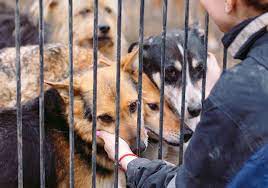Table of Contents
ToggleDogs, like humans, experience stress that can affect their health and behavior. Recognizing the early signs of stress in dogs is crucial to ensure their well-being. Whether it’s subtle changes in body language or shifts in habits, early detection can make a huge difference in their quality of life.
Identifying Early Signs of Stress in Dogs
Stress in dogs often manifests through physical and behavioral changes. These signs are their way of communicating discomfort or unease.
Behavioral Indicators of Stress
Behavioral changes are one of the most noticeable indicators of stress in dogs. For example, dogs might bark more than usual, whine excessively, or become destructive. Some may exhibit repetitive behaviors like pacing or licking themselves. Others may seem withdrawn or unusually clingy.
If you’re unsure whether these behaviors indicate stress, resources like this guide from the AKC provide detailed examples to help interpret your dog’s actions better.
Physical Signs of Stress
Stress doesn’t just affect a dog’s mind; it can show physically. You might notice your dog panting heavily, drooling excessively, or tucking their tail. Their posture can also change, such as ears pinned back or a stiff body. Even subtle signs like wide eyes or showing the whites of their eyes (“whale eye”) can signal stress.
For a comprehensive overview of physical symptoms, VCA Animal Hospitals provides a helpful breakdown of common stress indicators.
Changes in Eating and Sleeping Habits
Stress often disrupts a dog’s eating and sleeping habits. They might lose interest in food or overeat due to anxiety. Similarly, they could struggle to sleep or sleep excessively in response to stress. Such changes should always be monitored closely, as they can also indicate underlying health issues.
Understanding the Causes of Stress in Dogs
Recognizing the root cause of stress is as important as identifying the signs. While each dog is unique, certain triggers are more common.
Environmental Stressors
Environmental changes can significantly impact a dog’s mood. Loud noises, such as fireworks or thunderstorms, are frequent culprits. A change in routine, like a shift in household dynamics or introducing a new pet, can also make dogs feel uneasy.
You can learn more about how changes in routine affect dogs on Blue Cross, which discusses stress caused by various environmental factors.
Health-Related Stress
Health issues are another contributing factor to canine stress. Pain, illness, or even aging-related changes can create discomfort and lead to anxiety. If you suspect health problems, consulting a vet promptly is vital.
For additional insights into how health affects stress in dogs, Hills Pet offers valuable advice on recognizing and addressing such challenges.
What to Do When You Spot a Stressed Dog
Once you’ve identified stress in your dog, it’s time to take action. Being supportive and attentive can help reduce their anxiety.
Creating a Safe Space
Every dog needs a spot where they feel completely safe. This might be a quiet corner with their favorite bed or crate. Reducing external triggers, like lowering noise levels, can help, too. Make the area inviting with familiar items like toys or blankets.
Implementing Stress-Relief Techniques
Exercise is a great way to manage stress in dogs. A long walk or some interactive play can do wonders. Mental stimulation, such as puzzle toys, can distract your dog from their worries. Relaxation exercises, like gentle massage, can also work wonders.
Training sessions, focusing on positive reinforcement, can further help build your dog’s confidence and reduce stress. If you’re searching for additional methods, PetMD offers plenty of actionable solutions to curb canine anxiety.
When to Seek Professional Help
Sometimes, stress levels become too significant to handle alone. If your dog exhibits extreme behaviors or physical symptoms persist, it’s essential to consult a veterinarian. They can rule out medical concerns or suggest working with a professional dog trainer or animal behaviorist.
For more guidance, Happy Dog Training provides advice on assessing stress levels and knowing when expert help is necessary.
Conclusion
Keeping an eye on your dog’s stress is essential for their overall well-being. From early behavioral changes to more apparent physical signs, knowing what to look for can help your dog lead a happier, stress-free life. By addressing environmental factors, ensuring good health, and providing comfort, you can significantly reduce your dog’s stress. Remember, their happiness and health start with your awareness and care.











![The Ultimate Guide to Road Tripping with Your Dog [2025 Update]](https://bellabeanupdate.com/wp-content/uploads/2025/05/pexels-photo-1143369-300x209.jpeg)



















